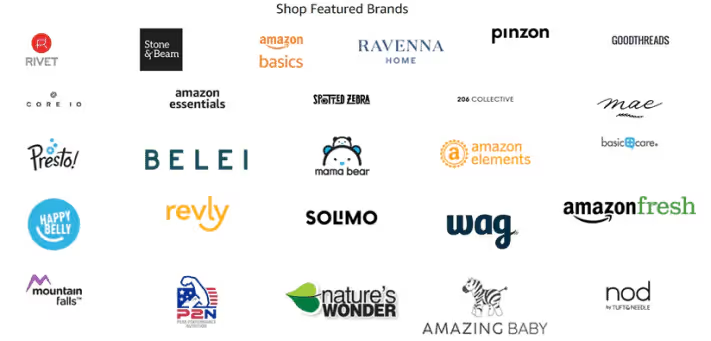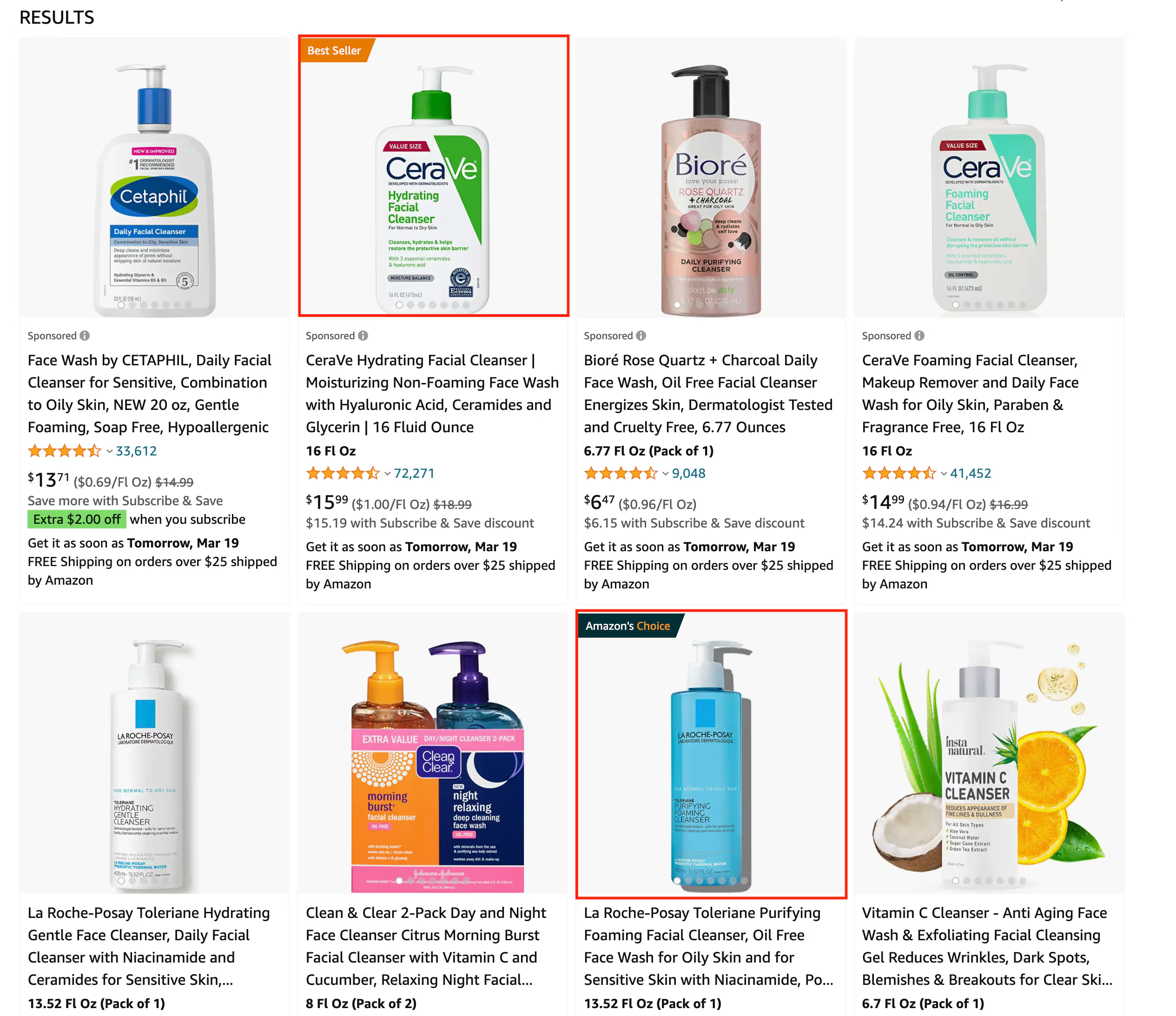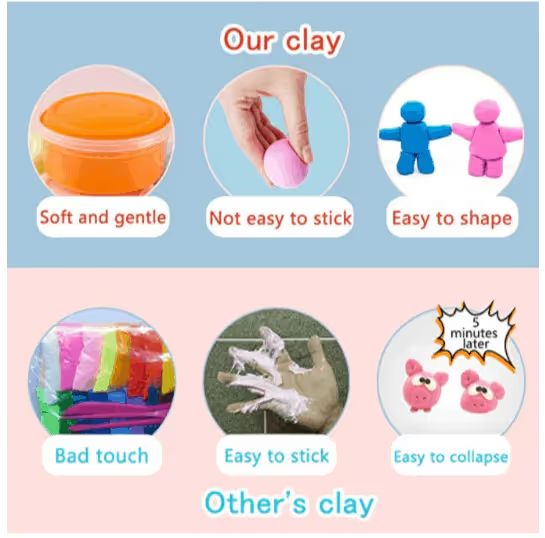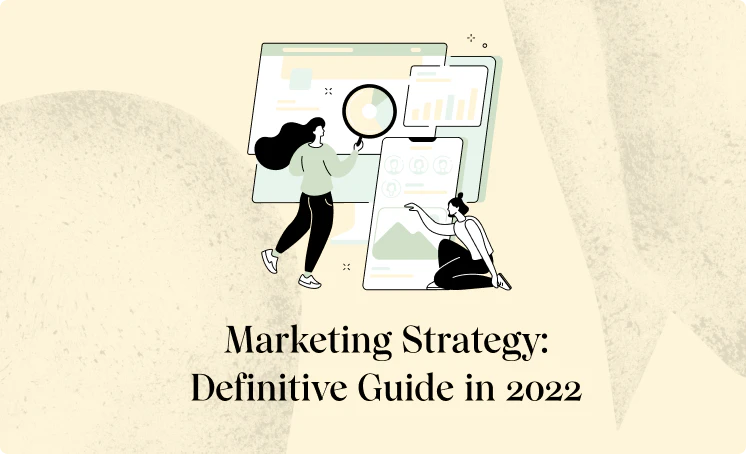Introduction
With around 12 million products listed on Amazon, the company has had to come up with ways to help customers make purchasing decisions without being paralyzed by overwhelm.
One of the ways you may have noticed is the Amazon Choice badge.
But like many pieces of Amazon, how that badge is given is secretive and complex.
Amazon likes to keep its deciding factors quiet, probably to avoid sellers trying to manipulate the system.
But they give some information on what factors matter and experience helps provide educated guesses to other likely factors.
This article aims to help you better understand what the Amazon Choice badge is and how to increase your product’s chances of snagging the label.
Now, let’s start with how Amazon’s Choice started.
How Amazon Choice Badge Began
The Amazon Choice badge began as a way to optimize voice search for Echo users.
Can you imagine using voice to comb through and narrow down all the products in a category? It would be a nightmare!
Amazon realized this – and as we know customer experience reigns supreme on the platform – so they decided to roll out the Amazon Choice badge in 2015 to streamline the products suggested to Echo shoppers.
If Echo shoppers performed a voice search for “multi-surface cleaner” and had brought a product within that category before, then that’s the product Amazon would recommend.
However, if the shopper had not ordered a product within the category before, Amazon would suggest an “Amazon Choice” product.
This limited the number of products for voice shoppers, making the buying process easier and faster.
How the Amazon Choice Badge Has Changed
The Amazon Choice badge must have worked well for Echo users because Amazon moved the badge onto its regular platform as well.
Amazon uses the Amazon Choice badge as another stamp of approval for some items on its marketplace.
As the voice search grows, there’s reason to believe Amazon’s Choice will stick around to optimize the shopping experience of Alexa and website users alike.
If you want to get ahead of the voice shopping trend specifically, or just want to get your product listing recognized to help get more sales, you’ll want to understand how the Amazon Choice badge works.
You may be wondering how Amazon selects products for its Amazon Choice badge, and if there’s any way for you to get it for your products.
How the badge is granted is another one of Amazon’s great secrets, but they do give some hints. Let’s look at what we know.
What Is the Amazon Choice Badge?

According to Amazon, the Choice badge is granted to “highly rated, well-priced products available to ship immediately.”
Given that those are Amazon’s qualifications, we know they consider:
- Product reviews
- Product price
- Prime eligibility
But by reviewing what products are most often granted the Amazon badge, and by seeing that the badge changes depending on the search term, we have a good idea of a few other factors that are considered.
Other factors to consider are:
- Keywords
- Click-throughs and conversions
- Low return rate
Now that you have an idea what the Amazon Choice badge is, let’s talk about what it isn’t.
What Amazon Choice Badge Isn’t
In addition to what we know about how Amazon Choice products are selected, we know a few things that aren’t included.
YOU CANNOT “BUY” AN AMAZON CHOICE BADGE FOR YOUR PRODUCT.
The Amazon Choice badge isn’t for sale. You can’t pay for your items to be included in the program, and there is nothing to enroll in.
As noted above, the badge isn’t even based on sales primarily.
No one can request or pay to get the badge, not even the big brands.
AMAZON CHOICE BADGES AREN’T GRANTED BASED ON HUMAN TESTING.
Though we don’t know for sure how the Amazon Choice badge is determined, we have a pretty good idea.
Like most things on Amazon, the Choice badge is likely algorithm-based.
The algorithm may include reviews in its selection process, but that’s probably as close to human testing as the badge determination gets.
Amazon has not confirmed or denied that they test any of the products themselves, but given the number of products included it’s fairly safe to assume that they don’t.
THIRD-PARTY EVALUATIONS AREN’T USED TO DETERMINE AMAZON CHOICE BADGES.
Amazon does not take into account any third-party reviews or testing.
Some sites use aggregate review data to inform their product recommendations, but not Amazon.
All determinations used to aware the Amazon Choice badge are pulled from their platform.
Unsurprisingly, they choose not to use outside sources given that Amazon prefers to control as much of the customer shopping experience as possible.
Is Amazon’s Choice Badge for Major Brands Only?

While Amazon is trying to make all the large brands available on its website to make things easier for its customers (and to make more money), Amazon Choice isn’t only for the major brands.
There are a few reasons major brands might receive the Amazon Choice badge over smaller brands.
- They have the capacity to make all their products Prime eligible.
- They have better manufacturing options to keep their products in stock.
- Their product titles include branded keywords making their products most relevant to the search term.
Each of those factors makes their products more favorable for an Amazon Choice badge.
But that doesn’t mean other brands can’t get the badge if they can meet the same standards.
What Is the Difference Between Amazon Choice and Bestseller Badges?

You may be confused as to why Amazon has both an Amazon Bestseller and an Amazon Choice badge.
The Bestseller label and the Choice label are quite different.
Amazon Bestseller is granted based on sales data and Amazon Choice is based on price, ratings, and delivery method, among other things.
The Bestseller badge is also based on a specific category and subcategory, whereas the Choice badge is search term, not category focused.
Put simply, products with the highest sales volume in the subcategory (bestsellers) may not always be the product most closely related to the search term, or the most highly-rated, Prime-eligible listing (choice).
10 Strategies to Get an Amazon Choice Badge
Though there is no sure way to get the Amazon Choice label, here are some tips that will help improve your odds.
FOCUS ON KEYWORD RESEARCH
Amazon Choice badge is directly connected to the search term entered by the shopper.
The badge will vary across products depending on what keywords are entered, so that tells us that Amazon’s Choice is assigned to the products that Amazon believes most closely fits the search term (with high-ratings and fast shipping).
What does that mean for you?
That you better have done your keyword research and are paying attention to what’s working and what’s not.
If you know your keyword strategy isn’t as good as it could be, go take a look at our keyword research guide when you’re finished with this article.
When researching keywords you need to keep in mind that a product most likely is called several different things. For example, “key chain” and “keyring”.
Also, don’t cut your long-tail keywords too short.
You may not think it’s worth making your long-tail keywords super detailed, but you should test a couple before making that decision.
Even though they won’t be the most searched terms, they will be more likely to get you sales because the shopper will know you have exactly what they are looking for.
OPTIMIZE FOR AMAZON’S SEARCH ENGINE (AMAZON SEO)

Amazon’s SEO is fueled by keywords.
You’ll want to include keywords in your product title, product description, and in your backend keywords.
You only need to add each keyword in one part of your listing and you do not need to account for plural forms, but you may want to account for common misspellings in your backend, as there is no definitive answer to what errors the algorithm does and doesn’t account for.
Understand Amazon has character/byte limits:
- The product title has to be under 200 characters.
- The product description is limited to 2000 characters.
- Backend keywords are capped at 250 bytes.
Note that if you have access to A+ content, keywords used within that content will not be indexed and will need to be added elsewhere in your listing.
For more detailed information, see Amazon SEO in 2022.
SET COMPETITIVE PRICING
Amazon has stated that price plays a role in what products are granted the Choice badge.
We know that how your products are priced relative to similar products is part of the search algorithm as well.
Having competitive pricing cannot be undervalued.
There is more to setting your price than being lower than your competitors (though there might be a time for that).
Competitive pricing means that your product needs to be in the average cost range of products Amazon considers to be similar to yours.
Take a look at the below example from Amazon.
The product with the Amazon’s Choice badge isn’t the lowest price. There is a lower-priced option that’s also Prime-eligible that doesn’t have the badge.
But it’s in the middle range.
Did you know that research has shown that people prefer to pick the middle-of-the-road option most of the time?
Low cost triggers consumers to think low-quality, but no one wants to feel like they are over-paying either.
Amazon knows this, and it may be why many of the Amazon Choice products are neither the cheapest nor most expensive options.

TEST PRICING STRATEGIES
Initially pricing your products similar to your competitors is just one part of the pricing strategy on Amazon.
You can also try different pricing strategies to catch your customer’s and in turn Amazon’s, attention.
For example, past studies have shown that customers favor product prices that end with $0.99, but consumers have gotten wise to that and it doesn’t work as well as it used to.
You can test variations of your product price with different end values (example: $9.55 versus $9.90) to see what your customers respond to.
Or you could use a popular Amazon strategy called “repricing”.
This is when you change your product’s pricing in tiny increments to maintain a lower price than your closest competitors.
Repricing can be done manually or through repricing tools.
A repricing strategy shouldn’t be used unless you have a clear goal for doing so, and you have to set a limit on how low you will go.
Your product has to maintain a high enough profit that it’s worth your efforts to sell.
Another option you can try is to offer occasional discounts or coupons for your products.
OFFER VENDOR COUPONS/VOUCHERS

Offering a vendor coupon – or voucher depending on what version of Amazon you’re using – gives Amazon an extra incentive to show your product to customers.
The great thing about vendor coupons is that they are fully within your control.
You can choose to run a vendor coupon at any time as it is a self-service tool on Amazon.
And there are no upfront fees for vendor coupons.
The fees will be charged upon redemption of the coupons.
When you set up a vendor coupon for your product, it shows alongside your product listing on both the search results and the product page.
The coupon showing on your listing gives shoppers a reason, like the Amazon Choice badge, to click-through. Customers love to feel like they are getting the best deal after all.
If your budget allows for a promotion, vendor coupons may be a good choice.
Improve Your Conversion Rate
Though conversion rate isn’t explicitly listed as a factor to earn the Amazon’s Choice badge, we know that Amazon isn’t going to continue to show a listing that doesn’t convert to its customers.
Does an Amazon Choice badge even matter if your product is not budging from page 10 of the search results?
Probably not.
We’ve covered how to get your listing found through keywords and Amazon SEO, but what does your listing need to have once it’s been clicked on to convert customers?
There are two pieces to this:
1. Descriptive and accurate listings details
Your product listing’s job is to tell your customer everything they need to know before purchasing your product.
This may include product materials, size, and color, as well as key use and care instructions.
Customers need to know that your product will fit their lifestyle and there won’t be any unexpected surprises when it arrives.
2. Clear, benefit-driven images
Product images should mirror the information in your product description.
Some shoppers won’t read descriptions until they have looked through all your product photos.
Your main product image cannot include props to show design or scale, nor can there be added descriptive text, but your additional images should include these elements.
Ask yourself what you would need to know before buying your product and be sure you’re showcasing that information in both pieces of your listing.

GET BETTER USER REVIEWS
Amazon has very strict rules around product reviews.
The best way you can gain happy reviews is to provide top-notch customer service – alongside your high-quality product, of course.
If a customer has a question, be sure to answer it accurately and timely. Being friendly never hurt either.
You’ll also want to manage any negative product feedback you may receive through Amazon customer service calls or emails.
Even if your customer isn’t happy with your product, if you address their concerns they are less likely to leave you a bad product review.
Along with feedback, there are some other cues to customer satisfaction you can look at to help address concerns before they become negative reviews.
Some of the metrics you should be monitoring are:
- Pre-fulfillment cancellations
- Refund rates
- Late shipment rates
If any of these start to spike, you need to figure out why.
Staying on top of your reviews and other satisfaction metrics is crucial to Amazon’s success, and getting the Choice badge.
Another thing that makes customers happy and more likely to leave a good review, fast shipping.

MAKE YOUR PRODUCTS PRIME-ELIGIBLE
Though fast shipping isn’t directly related to your product, Amazon has made a name for itself by providing quality products to its customers quickly.
Customers don’t take kindly to extending waiting times on the items they purchase.
The best remedy for this is to make your products Prime-eligible.
There is an option to be Prime-eligible and still self-fulfill your products, but you have to be able to guarantee you can meet Amazon’s high standards or risk having your products removed from the program.
You have to use Amazon’s approved carriers, you have to ship 99% of your orders on time with zero-day handling, and you have to have an order cancellation rate of less than 0.5%, among other things.
Prime members pay to get their packages as quickly as possible and Amazon isn’t willing to risk those paying customers for any brand.
Most sellers find that meeting Amazon’s requirements on self-fulfillment is too demanding and instead enroll in their FBA (Fulfillment By Amazon) program.
Amazon FBA allows them to verify stock is available and that it can get shipped efficiently, both important factors in gaining the Amazon Choice label.
HAVE FAST DELIVERY AND CONSTANT AVAILABILITY
Again, the best way for Amazon to ensure products are in stock and can be delivered efficiently is for them to have the products in their position.
Amazon FBA allows sellers to ship their products to Amazon for them to inventory, warehouse, and ship.
While enrolling in the FBA program solves the factor of fast delivery, it’s still on you to be sure your product remains in stock and in the Amazon warehouses.
Amazon provides a Restock Inventory tool to help sellers from running out of their products.
The tool will provide recommendations on restock quantities and ship-by dates.
Only you can know if you are planning any sales or promotions that may affect your stock, so while the tool is helpful, it is just a tool. You’ll need to plan accordingly for any big sales push.
LOWER YOUR RETURN RATE
Reasons for returns vary by product category.
Clothes and shoes are frequently returned due to sizing issues while home decor is often returned due to the color appearing different in photos than in person.
You’ll need to consider what factors impact your specific product and address them in your listing and customer questions.
It’s better to lose a sale before it happens than to have a high return rate and risk negative reviews.
Keep in mind that your product may appear a different color on screen or due to background colors in the photo impacting how the eye perceives the color.
You should try to describe the color in your description as best you can to combat this.
The same idea goes for product dimensions.
The angle and distance at which a product is photographed can cause products to appear larger or smaller than they truly are.
You’ll want to list dimensions on one of your photos and in your listing, or include a photo to show scale, so your customer has a clearer understanding of what they are purchasing.
If you are an Amazon Registered Brand, use product videos in your listing to show your product in use or demonstrate any functions that may be confusing.
Some issues cannot be avoided, but optimize your listing to the best of your ability to limit returns that will cost you money, and hurt your chances of getting the Amazon Choice badge.
How PPC Ads Can Help You Get the Amazon Choice Badge

Remember how Amazon’s Choice badge began as a program to help Echo users shop through voice search?
Well, it’s still the only shopping option for voice search.
Let’s also remember that major brands have better chances of getting the Amazon’s Choice brand in part because their customers search them by brand name.
With the increase in voice devices, it will pay to 1) have an established brand and 2) be Amazon’s Choice.
And though you can’t “buy” your way to an Amazon Choice badge, you can use PPC ads to build a brand that users search for.
The first step to building a brand is getting in front of your customers and getting your product in their hands.
We’ve helped use PPC ads to build up other brands, and we can help you too.
This way when it’s time for your customers to order they won’t just say “Alexa, order me whatever face wash.”, they’ll be asking for your brand by name.
Final Thoughts
Amazon Choice badge offers a unique opportunity for your product.
It puts you on a shortlist for shoppers using voice search, but more than that currently, it inspires trust in your product on Amazon’s website.
There is no shortcut for earning the Amazon Choice badge, but if you follow the tips outlined in this article, you’ll stand the best chance of gaining a badge for your product listing.
Any kind of endorsement from Amazon will help get your product listing clicked on, but don’t forget it’s still your job to convert them once they are there.














.webp)

.webp)








.webp)









































.webp)






